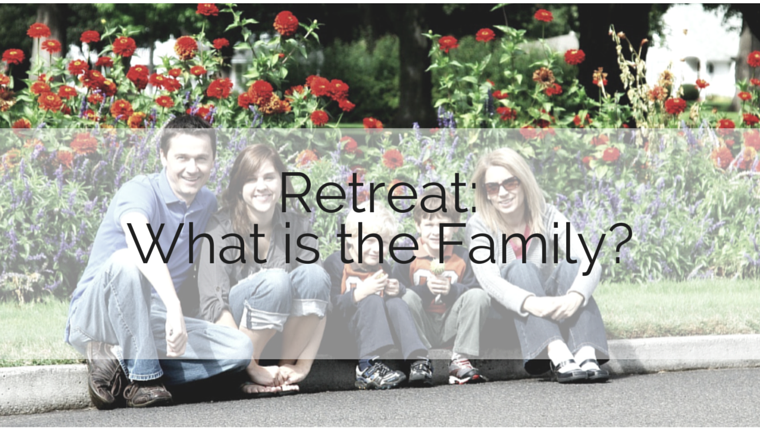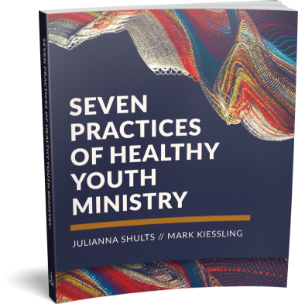A Family Retreat Designed to Strengthen & Affirm Family Life
by William Grimm
Download a PDF of the Retreat: What is the Family?
Objectives
The purposes of this retreat are:
- to give youth an opportunity to “retreat” together with their families and to get to know the families of their peers;
- to share expectations and roles of family members;
- to look at ways of expanding those roles in service to each other;
- to explore some Scriptural bases for family life;
- to more fully realize God’s love and forgiveness evident in our life together.
Format
This retreat plan is written as a 24-hour program designed for youth, their parents and siblings. It is written to be used on a Friday evening and conclude by dinner time on Saturday, therefore not interrupting commitments which some family members may have on Sunday morning. At the same time, it could easily be adapted to a Saturday and Sunday.
The Setting
Ideally. the retreat might be held at a retreat center, camp, or campsite within a short drive of your church. It could, however, be held right at your church with family members going home to sleep. It is important, however, that each participant make a commitment to attend the entire retreat program.
Advance Preparation
- Planning should begin with the selection of a “retreat committee” at least three months prior to the proposed date (perhaps the Friday and Saturday before Mother’s Day.) The committee should include both youth and adults.
- Determine the cost. This is important as part of the site selection process. It is important that families are not excluded because of the cost involved. Are there organizations or groups in your congregation who may help you sponsor the event and assist financially?
- Once the date and the site have been selected, begin to publicize the event so that families will set the date aside.
- Develop a simple registration form which will enable a family to list all members who will be attending and their ages. You may have to arrange for some people to go along to care for small children and infants during some of the topic time. School-age children should be able to participate in most of the retreat program.
- Send a letter or flyer out to all youth and their families. Good publicity and posters are important. One primary poster. easily visible to worshipers. should include a sign-up sheet. People like to know who else is going. Be sure you have some names on that sheet even before it is posted.
- Your total retreat plan should be ready at least six weeks prior to the retreat, including times, meal plans and a what-to-bring list. .
- After each family registers, you will need to send them another letter with specific information and instructions on the “Family Portrait” which they are to prepare in advance and bring to the retreat. (Details on this appear in the Getting Started-Family Portraits section of this article.)
- If you plan to play Family Feud on Friday night, you will possibly want to design your own survey and have 100 people compete the survey at some other church function prior to the retreat. Be sure to allow a couple weeks to tabulate the results. Some sample questions might be:
- What was the most popular board game in 1989?
- How many hours per week does the average teen spend studying?
- What percent of the sermon does the average church-goer listen to?
- What is the most popular occupation in the Bible?
- What is the most common gift seniors receive upon graduation from high school?
- Arrange for transportation–a bus so everyone (including parents) can ride together to the retreat site would be ideal. Perhaps you could play some “get acquainted” type games during the bus trip. Or give some conversation starters and have everyone change seating partners every five minutes.
- Prior to the retreat, the leaders should assign each participant to a small group of five people. Each group of five should have a mix of male and female, adults, youth and younger siblings. These groups will be used in the opening topic and Family Feud. Simply call the groups “Quintets” and give each one the name of an animal.
A Sample Schedule
Friday
5:00 p.m. Meet at church – Travel to retreat site
6:30 Arrive, unpack and get set to go
7:00 Supper
8:00 Opening Devotion-Jesus at Age Twelve
8:15 Getting Started-Family Portraits
9:00 Topic 1 – What Is the Family?
9:30 Break
10:00 Family Feud and popcorn
11 :00 Evening Devotion
11 :15 Conversation and bedtime
Saturday
8:00 a.m. Breakfast
9:00 Devotion and Bible Study-Roles and Role Models
10:00 Break
10:30 Topic 2-lt’s My Responsibility
11 :30 Preparing for lunch
12:00 noon Lunch
1:00 p.m. Topic 3-Where Do We Go from Here?
2:00 Closing Devotion
2:15 Recreation
4:15 Leave for home
Materials Needed
A poster board (22″ X 28”) for each family
Many large sheets of newsprint
Many marking pens of different colors
Magazines to be cut up for pictures-best are those with many family-type pictures
Glue sticks
Different tapes (masking, transparent)
Reproduction of Bible study material, questions and “challenges” found in the text of this retreat program
Recreational supplies and perhaps some game books











0 Comments